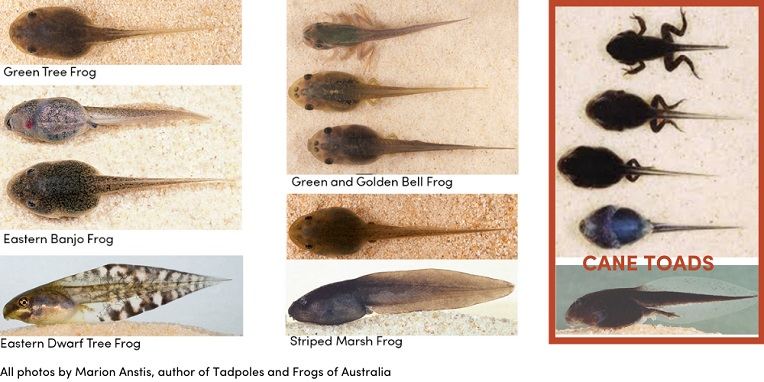Trapping cane toad tadpoles
Scientists discovered that cane toad eggs release an attractant, which draws in other cane toad tadpoles who predate on the eggs.
Cane toads (Rhinella marina) are Australia’s worst invasive species.
Cane toad trap
A groundbreaking method discovered by University of Queensland uses the toad’s own toxins to lure cane toad tadpoles by the thousands into a trap where they can be removed and euthanised humanely.
This cane toad trap can now be purchased at Watergum.
How the cane toad trap works
Scientists discovered that cane toad eggs release an attractant, which draws in other cane toad tadpoles who predate on the eggs (yes, cane toads are cannibals). Researchers were then able to replicate the ‘smell’ of the eggs into baits which are placed in a simple funnel-type trap. The cane toads swim into the trap and can’t swim out. Tadpoles are then euthanised by putting into the fridge for 12 hours, then putting into the freezer.
Cane toad tadpoles can stay in tadpole form for a long time, between 3–20 weeks. For this reason trapping tadpoles before they metamorphose can be an extremely effective way of removing an entire generation of toads from your property. Ongoing efforts can reduce the toad population in your local area.
Cane toads are poisonous at all life cycle stages. For this reason it is important to dispose of the euthanised tadpoles in a place where they can’t be ingested by other animals.
Although the baits only attract cane toad tadpoles, it is still possible for a native fish or frog tadpoles to accidentally swim into the trap. It is recommended that landholders scoop the tadpoles out of the trap and check for any off target species which should be returned to the waterbody.
Cane toads can be distinguished from other tadpoles (see image below) by being big and black, active in the heat of the day, swarming in the open and almost a diamond shape. Alternatively native tadpoles have a round, oval or irregular body shape, are independent (not swarming), and shelter under leaves or near the bottom.

It is important to check the trap and remove the catch regularly as dead tadpoles release a pheromone to warn other cane toad tadpoles of danger. For this reason it is also important not to let the trap get too hot during the heat of the day.
You may be wondering, ‘How many traps do I need in my dam?’ One trap per 15-20m2 of water surface area is optimum. The water should come up to just above the funnel, you don’t want to completely submerge the trap.
For more information on the Cane toad trap visit Watergum.
